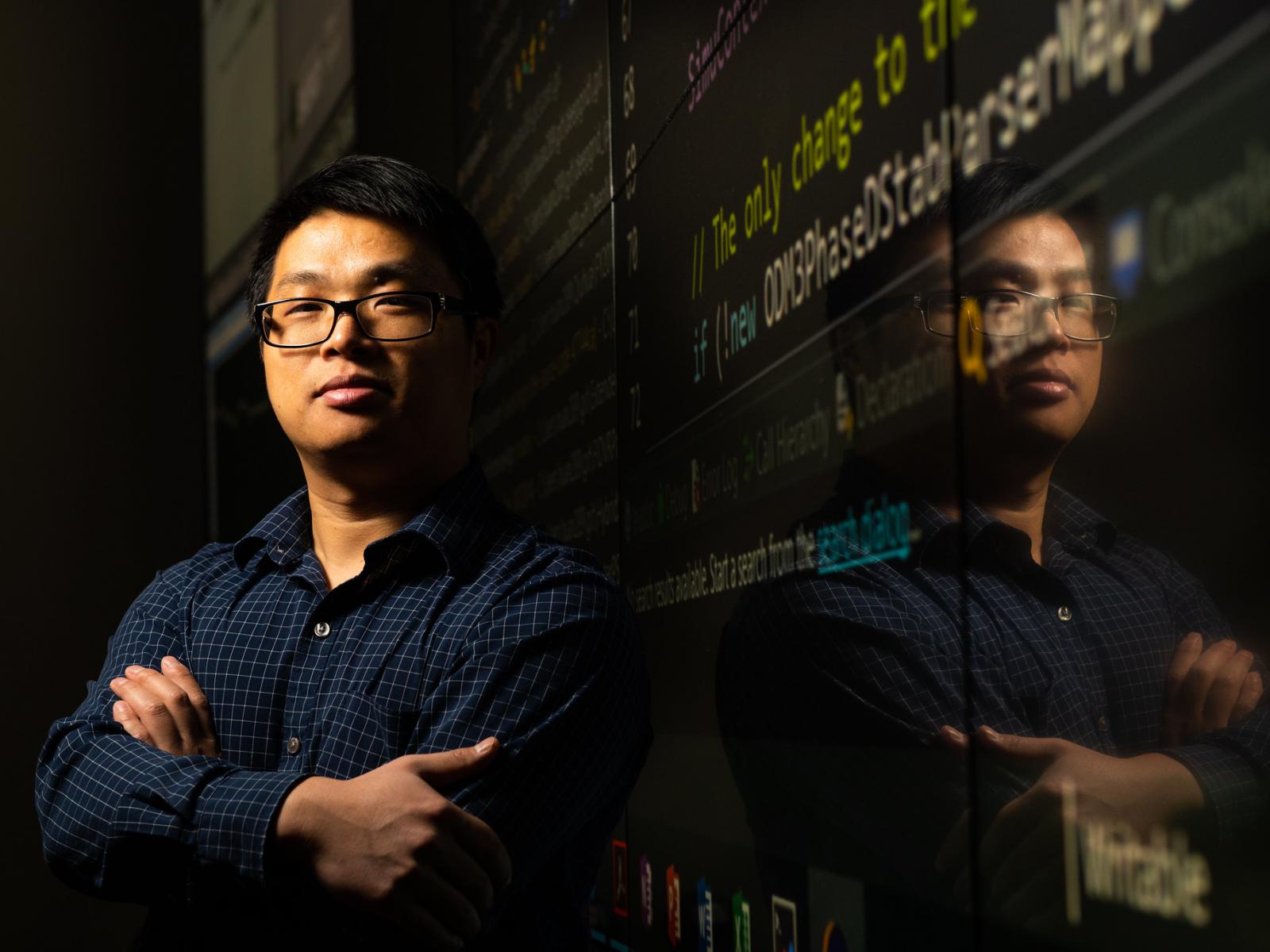PNNL Engineer Shines Light on Small Power Contributors to Gigantic Grid
Industry group bestows top award for Qiuhua Huang’s groundbreaking study

PNNL engineer Qiuhua Huang wants the nation’s electric grid to be ready for the addition of small energy producers.
Andrea Starr
More and more people are adding solar arrays, and soon will be adding pint-sized wind turbines and energy-generating and storage gizmos of all sorts to their humble abodes. Qiuhua Huang wants the nation’s electric grid to be ready.
Huang explored the challenge of integrating all those tiny contributors to the larger whole in a study titled, “Integrated Transmission and Distribution System Power Flow & Dynamic Simulation Using Mixed Three-Sequence/Three-Phase Modeling.”
Huang, a senior power system research engineer in PNNL’s Electricity Infrastructure group, was recently honored for his work. The IEEE Power & Energy Society (PES) named Huang and co-author Vijay Vittal of Arizona State University (ASU) as recipients of the 2019 PES Prize Paper Award. Only two papers are chosen each year to win this award, with this year’s presented in August at the IEEE PES General Meeting held in Atlanta.
Arizona State Inspiration
Huang says that he saw an opportunity to investigate a shortcoming in the electrical distribution industry while he worked on his doctorate under the guidance of Vittal, a professor in ASU’s Department of Electrical, Computer and Energy Engineering.
Grid analysis traditionally focuses on the interaction between large electricity producers and utility distribution companies—small energy producers are highly underrepresented or even completely ignored. Huang saw an opportunity for exploration.
“There was a big gap in the industry,” Huang says. “And this gap prevents grid operators from fully understanding the impacts of distributed energy resources on the grid as a whole.”
Current distribution system modeling, Huang explains, has not kept pace with the steady addition of renewable generation and energy storage technologies. Researchers and engineers in the electric power industry typically perform studies on transmission and distribution systems independently, using over-simplified representations of one system when the other one is studied closely.
That approach doesn’t account for the impact of the rooftop solar arrays and other distributed energy resources on the gigantic grid. To address that, Qiuhua developed an innovative transmission and distribution analysis approach.
Converging on a Solution
More importantly, his method also addresses the challenges of convergence of dynamic co-simulation for modeling unbalanced conditions and faults at the transmission and distribution boundaries and within the transmission system.
Co-simulation is a modeling technique for complex systems. In the power industry, it refers to two or more power system simulators that model different parts of a large system exchanging information or iterating for each time step during a multiple time step simulation. This is roughly like two people with different viewpoints at the beginning of a conversation working toward consensus through exchanging ideas. Huang’s algorithm design enables that consensus to take place. Thanks to Huang’s work, grid planners and operators have a better understanding of the impacts distributed energy resources not only at the local level but at the whole system level.
Since joining PNNL, Huang continues to develop and apply co-simulation technologies for other challenging problems facing the electric power industry, such as coordinated transmission, distribution, and communication systems restoration; composite load model calibration; and transactive energy system simulation.
Huang received his doctorate in electrical engineering from ASU in 2016. He received BE and MS degrees in electrical engineering from South China University of Technology, Guangzhou, China, in 2009 and 2012, respectively.
Published: October 23, 2019